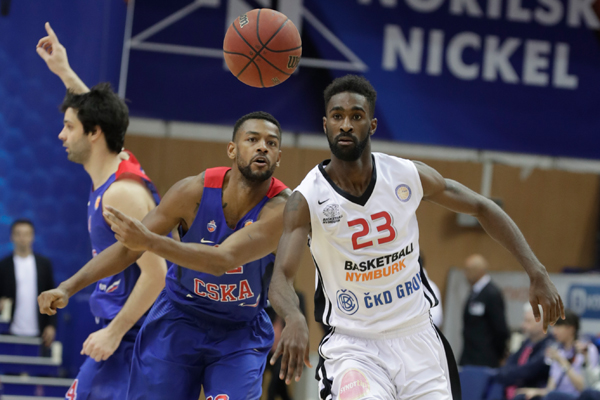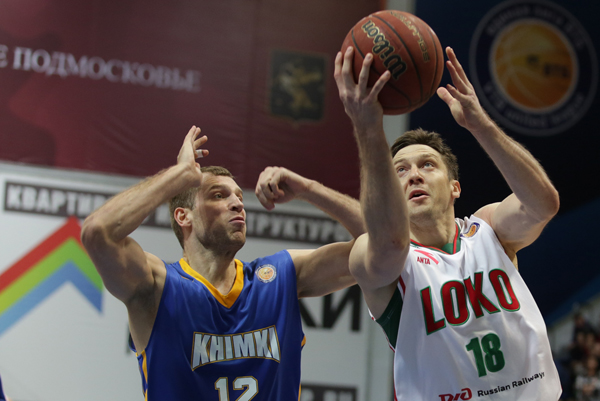05may
Ranking Europe's Top Leagues: Part II

Do you remember how we launched a big project at the end of December, attempting to create a new ranking of European basketball's domestic and regional leagues?
What, you don't remember?
Well, if that's the case, it's a bit easier for me to admit that I nearly forgot as well. I promised to return with a fresh perspective in April, once the Euroleague Top 16 had concluded, but now it's already May.
But a delay of four weeks is no tragedy. I apologize for my temporary forgetfulness and am now ready to carry out the responsibilities I took on four-plus months ago.
At that time, the initial group stages of Europe's three cup tournaments were wrapping up, giving me little to work with in my initial ranking. But I did formulate the guiding principle: leagues only receive points based on a club's final place in the competition. In other words, all that matters is how far each team advances. There's no value to the number of wins and losses along the way. Who cares (I personally find it meaningless) if that's how European football has done it for years. We can make up our own minds and UEFA can't do a thing about it. We create what we want.
I also warned you that my first stab at awarding points for each stage of the various competitions would likely need some adjusting in the spring. Not to provide anyone with an unfair advantage (God forbid!), but for the sake of ultimate objectivity. Indeed, once I sat down with a calculator with the Euro season nearly complete (only the Euroleague Final Four remains), I saw that my December ramblings had already become outdated. At the time, I thought I should award one point for advancing to the second round of the FIBA Europe Cup. With all due respect to Nymburk and Tsmoki-Minsk, who did not make it out of the second round, that turned out to be a mistake.

See, I can be objective, even though you are reading this article on the official website of the league in which Nymburk and Tsmoki compete. If Nymburk had played in Europe the way it did in the VTB United League, the team wouldn't have had any trouble against "giants" like Antwerpen and Akademik. Meanwhile, Enisey won only 11 games in the VTB United League, but managed to advance all the way to the Europe Cup Final Four, giving eventual champions Skyliners a big scare in the semifinals.
Perhaps someone will say that the United League is more important to Nymburk than such a weak European cup. Perhaps. It's true that the VTB League is firmly among the top three leagues on the continent, both in December's rankings and now at the end of the season. But there's literally nothing else that we can use to compare domestic/regional leagues. The European cups are the be all end all. Nothing else allows us to judge. Plus, there's more to discuss than just Nymburk. For example, you can find reverse examples. Lokomotiv, after all, decided to conserve its strength in the United League as much as possible in order to qualify and prepare for the Euroleague Final Four.

That was a controversial move, by the way. It appears Krasnodar has lost almost any chance of remaining in the Euroleague next season, with the exception of the wild card. But that's not what we're here to discuss. Different clubs have different priorities, but when you add it all up, you get a rather objective picture, which I will now discuss.
Here's the updated version of my ranking system, revealing how many points each club and league will receive for advancing through the 2015-16 European cups.
| Stage | Euroleague | Eurocup | FIBA Europe Cup |
| 1st group stage | 3 | 0 | 0 |
| 2nd group stage | 6 | 3 | 0 |
| Round of 16 | - | 4 | 0 |
| Quarterfinals | 10 | 5 | 0 |
| Semifinals | 15 | 6 | 1 |
| Finals | 19 | 7 | 2 |
| Championship | 25 | 9 | 3 |
Let me repeat myself one more time. Each team receives points only once, upon elimination from the competition or upon winning the championship. Lokomotiv, for example, has guaranteed itself (and the VTB United League) 15 points, not 3+6+10+15.
These rankings are subjective and certainly not perfect. But I tried my best, attempting to rank clubs from various competitions both this season and in former years. This is what I ended up with. By the way, nothing would prevent us from making new adjustments at the end of the season, though they would only have a cosmetic impact by then.
Now we've come to the most interesting part: the league rankings. I want to draw your attention to the fact that one of the Euroleague semifinals feature two Russian clubs, meaning that the VTB United League has already been awarded points for reaching the final.
| League | Euroleague | Eurocup | FIBA Eurocup Cup | Total |
| 1. Spain 2. VTB United League |
41 40 |
16 16 |
0 1 |
57 57 |
| 3. Turkey | 27 | 20 | 0 | 47 |
| 4. Germany | 6 | 19 | 3 | 28 |
| 5. Greece 6. Italy |
16 0 |
6 20 |
0 2 |
22 22 |
| 7. Adriatic League | 16 | 3 | 0 | 19 |
| 8. France | 0 | 11 | 1 | 12 |
| 9. Lithuania | 6 | 3 | 0 | 9 |
| 10. Israel | 0 | 6 | 0 | 6 |
| 11. Poland | 0 | 5 | 0 | 5 |
| 12. Hungary | 0 | 3 | 0 | 3 |
Don't be confused by the "zeros" under the Euroleague column for countries that had clubs in the competition. Those teams were eliminated from the Euroleague in the first round and switched to the 2nd round of the Eurocup. But that's not too significant. Most importantly, the rankings are quite realistic and intriguing. For example, if Fenerbahce wins the Euroleague title on May 15 in Berlin, then 1st place in the final rankings will be split by the Spanish, Turkish and VTB United League competitions. On the other hand, if Baskonia defeats Fenerbahce in the semis or one of our clubs, either CSKA or Loko, does the same in the championship game, then that club's respective league will finish 1st. That said, one year is too little time to gain an objective understanding. For that reason, I plan to add the previous two-three seasons to our rankings.
Of course, I won't weight each year equally, like our football colleagues at UEFA. Rather, each preceding year will have a little less impact on the rankings. In other words, there is still work to do. Until we meet again in the summer on this blog!
So long as I don't forget...












































